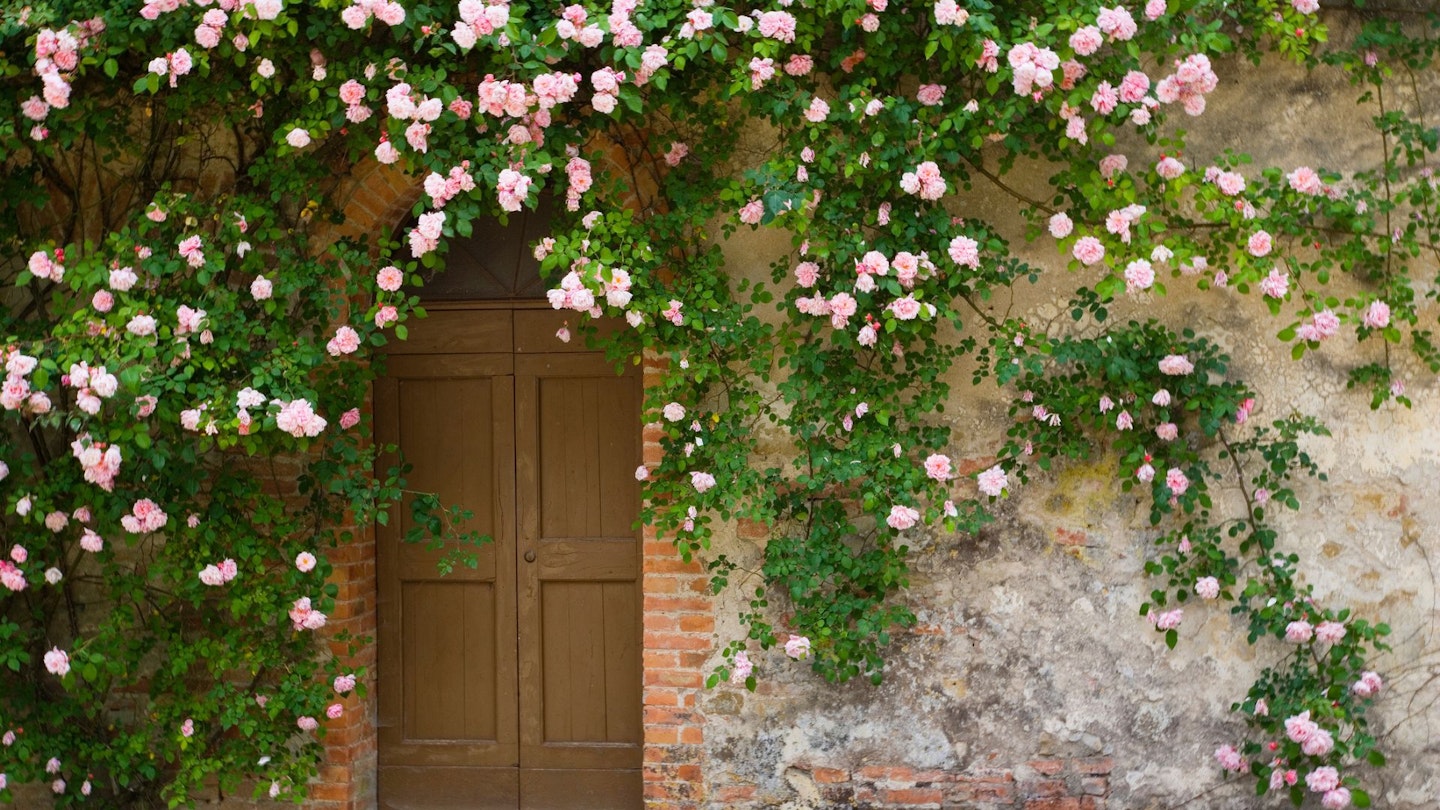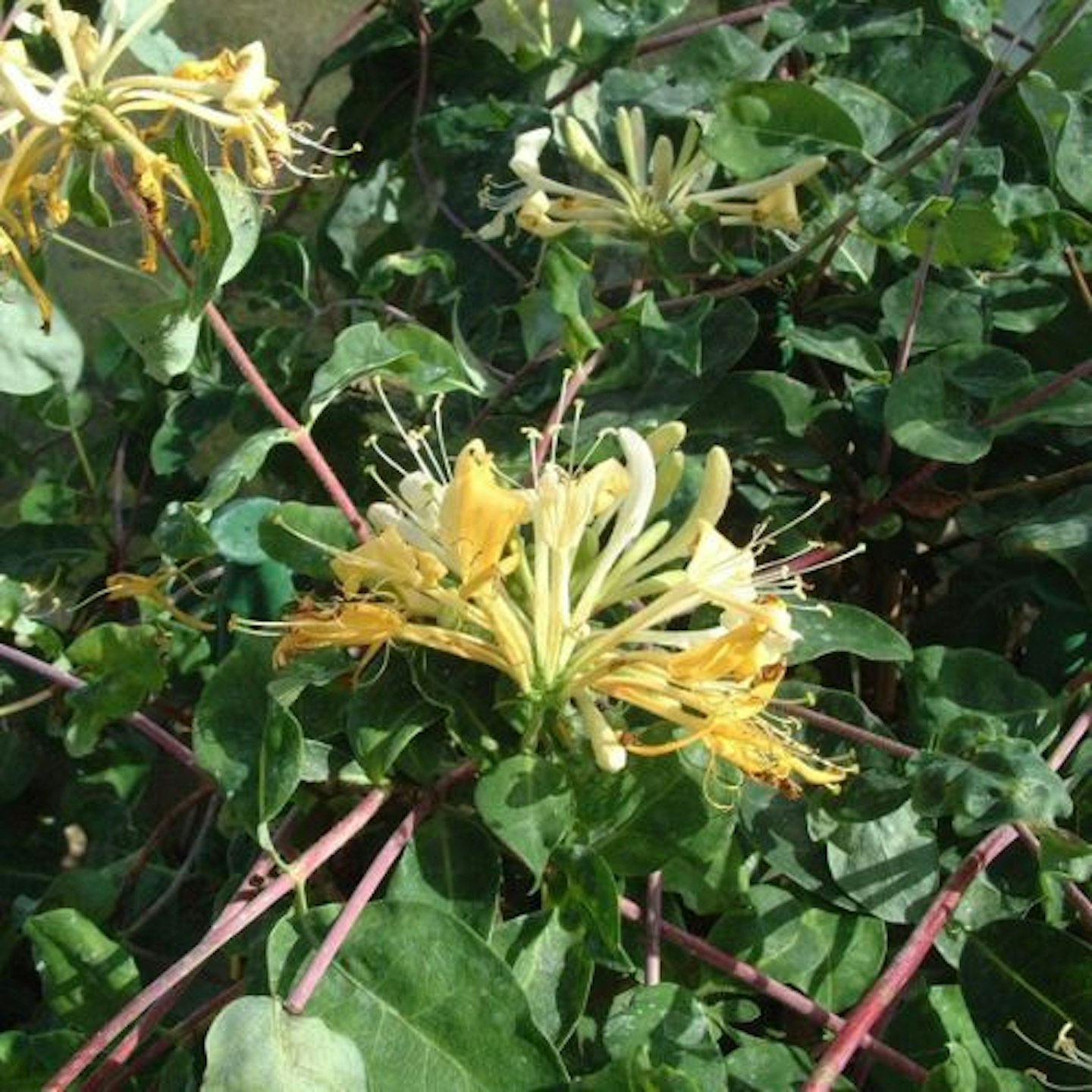Whether clinger, twiner or clamberer, the best climbing plants have the innate ability to clothe, screen or divide. All the while, they deliver a floral spectacle or scent the air without encroaching on valuable space. Their aerial lifestyles make them ideal for clothing and softening the boundaries of small gardens, particularly stark city courtyards encircled by masonry. We’ve put together some of our favourites into this list of the best outdoor plants that climb.
Climbers are the great transformers of vertical surfaces. Garden Answers expert Ian Hodgson says: "The method that climbers use to adhere or attach themselves profoundly determines their suitability for particular purposes and the methods used to attach them, so really get to know how they grow before buying. Combine this knowledge with an appreciation of the growing conditions they like, and you won’t go far wrong." Ian has helped us put our list together of these stunning outdoor plants. Renowned for their aesthetic beauty, they're cottagecore gardens personified.
Climbing plants, also known as vine plants or creepers, are fascinating, adding a unique dimension to gardens, landscapes, and indoor spaces. Similar to privacy screening plants that stretch tall and wide, climbers can offer natural privacy. Using their tendrils, twining stems, or adhesive roots to latch onto structures or other vegetation, they ascend vertical surfaces with ease and beauty. With their lush foliage, they soften the harsh lines from your unsightly garden walls, giving your outdoor space a natural, organic feel. They make a great alternative to hedge plants, too.
Best climbing plants at a glance
• Best climber for fast growth: Clematis montana var. montana - View Offer at Crocus
• Best climber for smaller gardens: Lonicera periclymenum - View Offer at Crocus
• Best climber for beginners: Parthenocissus tricuspidata "Boston Ivy" - View Offer at Thompson and Morgan
• Best climbing plant: Passiflora 'Purple Haze - View Offer at Thompson and Morgan
Why do we love climbing plants so much? Vertical gardening with climbers allows you to make the most of your available space while still enjoying a lush and green environment. When trained onto trellises, they can provide a beautiful addition to an area where you might relax with a comfy chair and a good book. Not only that, but they provide shelter and nesting sites for our feathered friends, making them great plants for birds and bees. Below, with the guidance of Ian, we've hand-picked our favourite creepers, sure to turn your garden into a whimsical haven.
Best Climbing Plants 2023
Climbers provide rapid height wherever needed.
Clematis
Clematis are among the most versatile both in size and situation.
Firstly, spring flowering types such as deciduous Clematis montana or evergreen C. armandii will achieve 6-9m (20-30 feet) and are good in sun or shade and don’t need annual pruning.
Best climber for fast growth
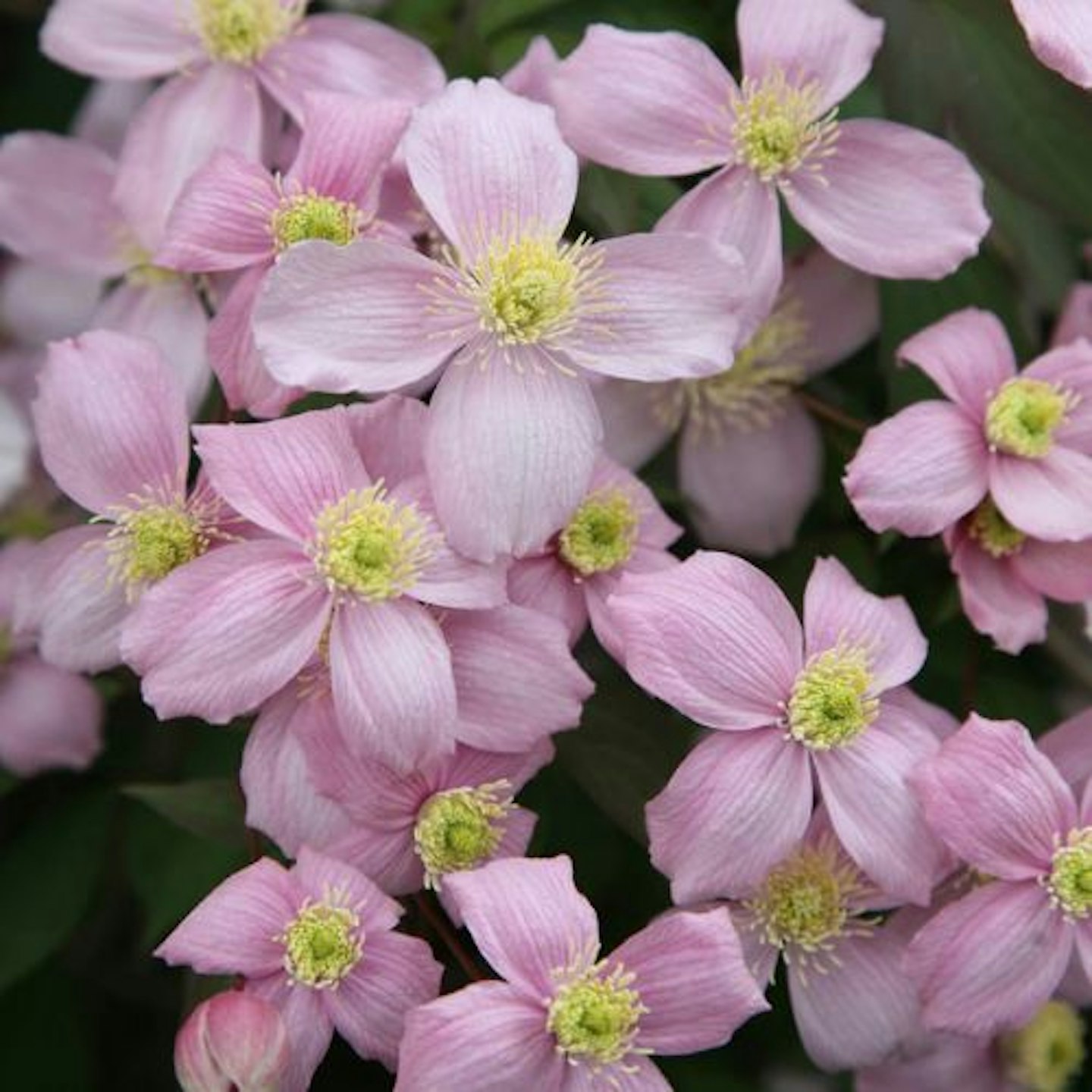
www.crocus.co.uk
Mauve-pink blossoms blanket the plant in late spring, harmonizing with purple-tinged, mid-green foliage. This rapidly ascending Clematis montana var. montana clematis excels at wall or fence coverage, but sturdy support is vital as it forms dense foliage.
Customer Review: "Established really quickly in large wooden half barrel in spite of planting very early in the year and in freezing weather. Produced a sprinkle of flowers after only three weeks and, less than a year later, is well covering a 6ft x 8ft wattle fence. Can wait to see the pretty pink flowers this spring."
Pros
- No routine pruning is necessary
- Fast-growing for an ugly wall
- Beautiful mauve-pink flowers
Cons
- Needs extra support as foliage can get dense
- A skin irritant and harmful for pets
| Height | 6 m |
| Spread | 5 m |
| Rate | Fast |
| Soil | Moderately fertile, moist, well-drained soil |
| Hardiness | Fully hardy |
| Position | Full sun / light shade |
| Flowering Period | May to June |
| Type | Deciduous |
Best fragrant climber
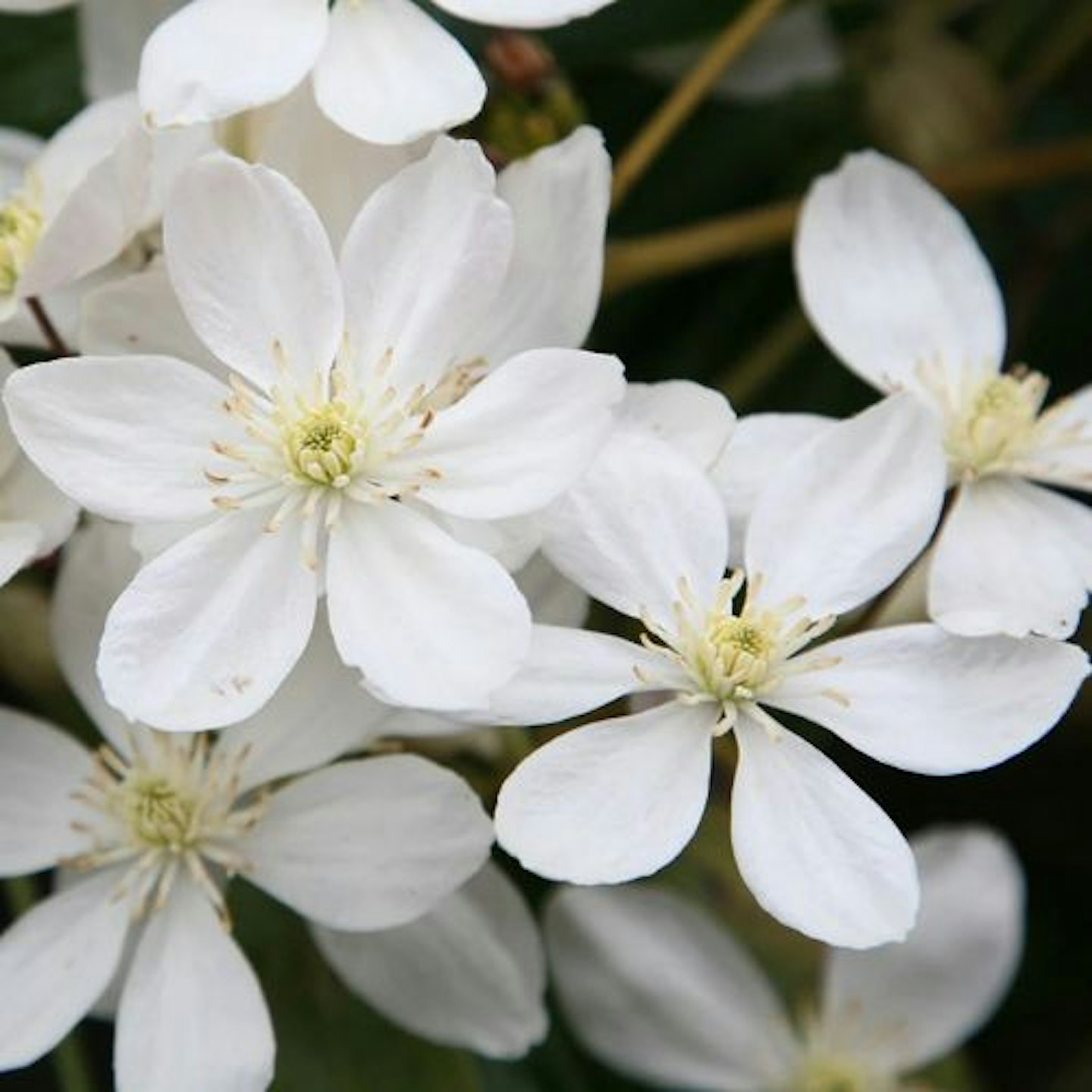
www.crocus.co.uk
This remarkable evergreen climber boasts handsome, lengthy lance-shaped leaves, rapidly enveloping walls or fences in just a few seasons. Early spring brings an abundance of fragrant, creamy-white, star-shaped flowers, while fresh leaves boast a bronze hue. Placing the Clematis armandi near a doorway ensures you'll savour the delightful scent.
Customer Review: "Great plant for covering my unsightly shed!"
Pros
- Fragrant, creamy-white flowers
- Evergreen, twining climber
- A delightful springtime bloom
Cons
- Needs plenty of room to spread out
- Toxic to dogs if eaten
| Height | 5 m |
| Spread | 3 m |
| Rate | Average |
| Soil | Moderately fertile, moist, well-drained soil |
| Hardiness | Borderline hardy (will need protection in winter in colder areas) |
| Position | Full sun / light shade |
| Flowering Period | March and April |
| Type | Evergreen |
On the other hand, large-flowered summer varieties prefer moist soil in sun. Many will reach 1.8 - 4m (6-13ft) and will need cutting back in spring.
Another type to consider is small spring-flowering types such as Clematis alpina, which enjoy sun or shade up low walls or fences. Fluffy seed heads in autumn are a welcome bonus.
All clematis need a framework of horizontal wires or trellis on which to climb.
Best climber for a north or east-facing site
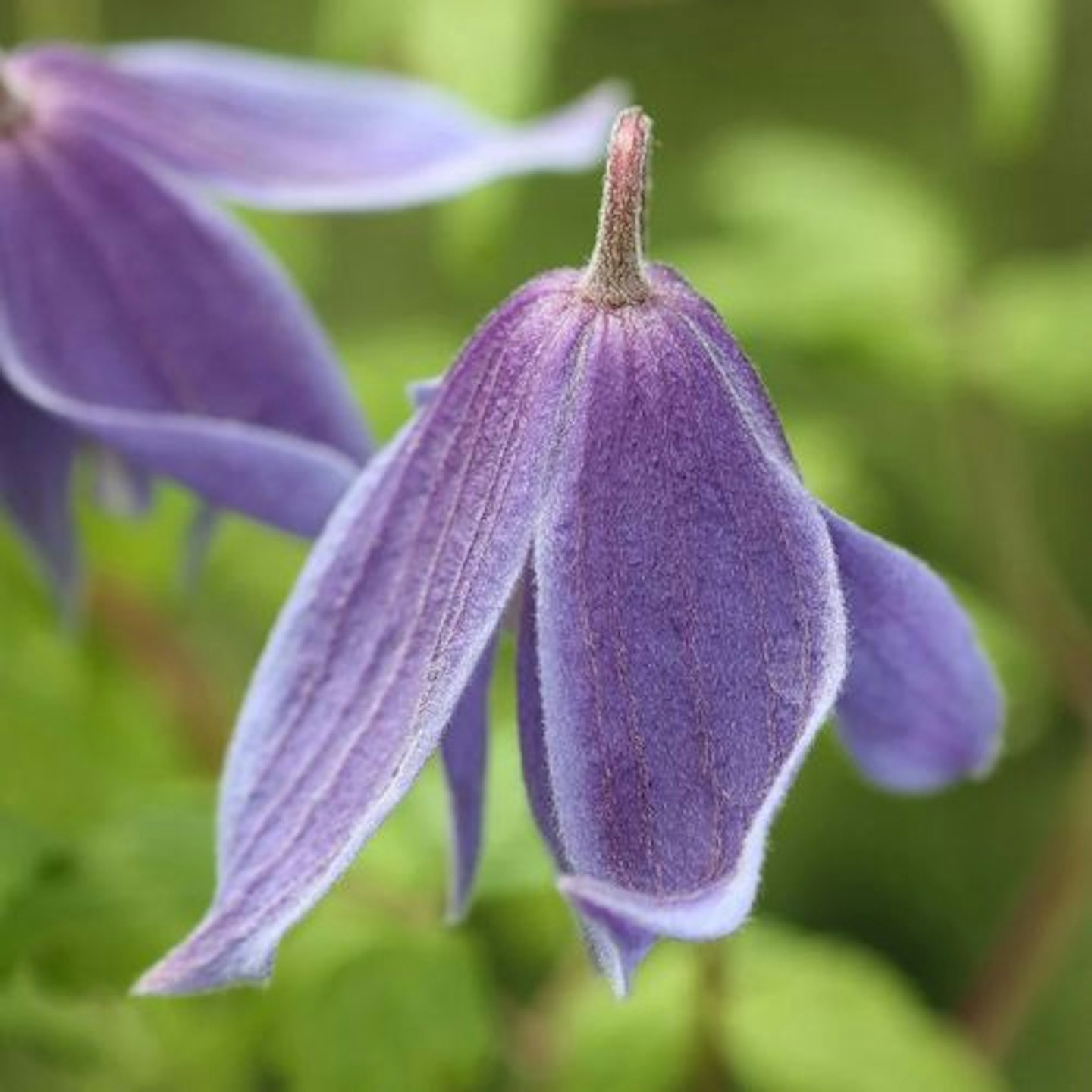
www.waitrosegarden.com
This petite Clematis alpina climber showcases charming mid-blue bell-shaped spring blooms adorned with creamy-white centres. Fluffy seed heads follow, accompanied by mid-green leaves. Perfect for north- or east-facing locations, it can grow independently with adequate support or meander through robust shrubs or trees. How pretty!
Pros
- Early spring-flowering
- Small, bell-shaped blue flowers
- Ideal for north or east-facing site
Cons
- Needs to be given suitable support
- Will not suit west or south-facing site
| Height | 3 m |
| Spread | 1.5 m |
| Rate | Average to Fast |
| Soil | Fertile, well-drained, neutral soil |
| Hardiness | Fully |
| Position | Full sun / partial shade |
| Flowering Period | April to May |
| Type |
Honeysuckles
Climbers have their fragrant stars, equal to any daphne or viburnum.
Drape spring and early-summer flowering honeysuckles such as varieties of L. periclymenum or L. japonica around a sheltered sitting area or garden arbour and let their sweet aroma permeate the air.
Best climber for a pergola or arch
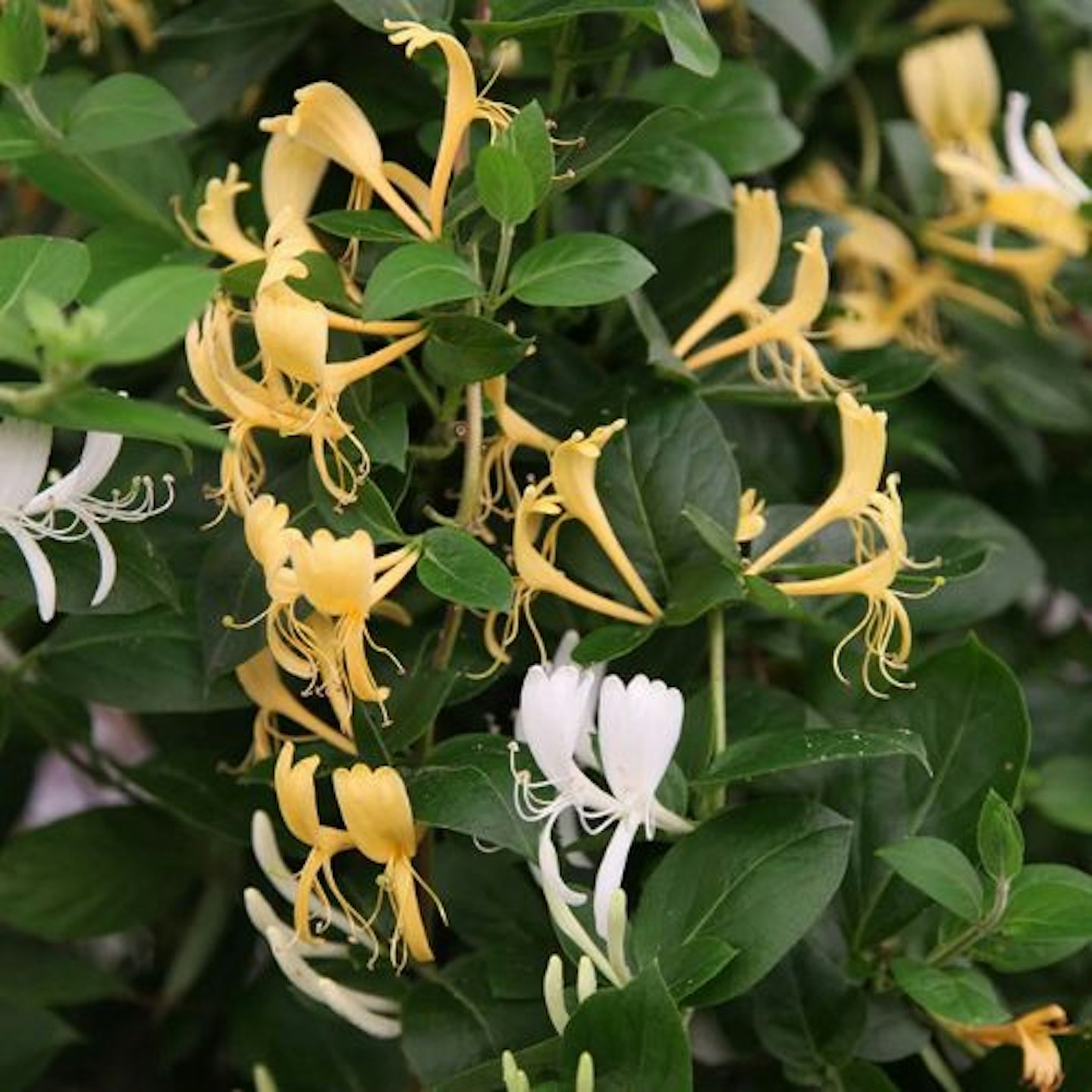
www.crocus.co.uk
Abundant pure white, sweetly scented tubular flowers, transitioning to a sunny yellow hue, adorn this elegant Lonicera japonica honeysuckle from April through August, creating a captivating two-toned display. Its glossy, dark green leaves often persist throughout the year, making it a robust choice for pergolas, arches, or boundary walls.
Customer Review: "Delivered on time and packaged very safely. The plant was lovely and healthy when removed from its packaging. It actually flowered this year, I can't wait until next year when it's more established. Will be definitely buying more plants from you again."
Pros
- Flowers from Spring to Summer
- Ideal for covering a pergola and arch
- Happy in the sun or partial shade
Cons
- Some customers have not had any luck with this
| Height | 10 m |
| Spread | 2 m |
| Rate | Fast-growing |
| Soil | Moderately fertile, moist, well-drained soil |
| Hardiness | Fully hardy |
| Position | Full sun / light shade |
| Flowering Period | April to August |
| Type | Semi-evergreen |
Roses
Climbing roses are quintessential elements of a cottage or English country garden. Coming in an astonishing range of colours and with many delightfully fragrant they are ideal for a sunny spot such as an archway, arbour or wall.
Best climber for large containers

www.crocus.co.uk
Crowned the 2023 Rose of the Year, Rose 'Peach Melba' is a captivating blend of peach and crushed strawberry hues. This charming rose boasts fragrant, cup-shaped blossoms in a subtle fusion of apricot and pink, offering repeat flowering throughout the summer. Classified as a short climber, it's ideal for smaller walls or spacious containers.
Pros
- Winner of the Rose of the Year for 2023
- Fragrant blooms in apricot and pink
- Ideal for smaller walls or large containers
Cons
- Susceptible to lots of pests
| Height | 2 m |
| Spread | 1.5 m |
| Rate | Average |
| Soil | Fertile, humus-rich, moist, well-drained soil |
| Hardiness | Hardy Shrub |
| Position | Full sun / semi shade |
| Flowering Period | July to September |
| Type | Deciduous |
Best rose climber collection
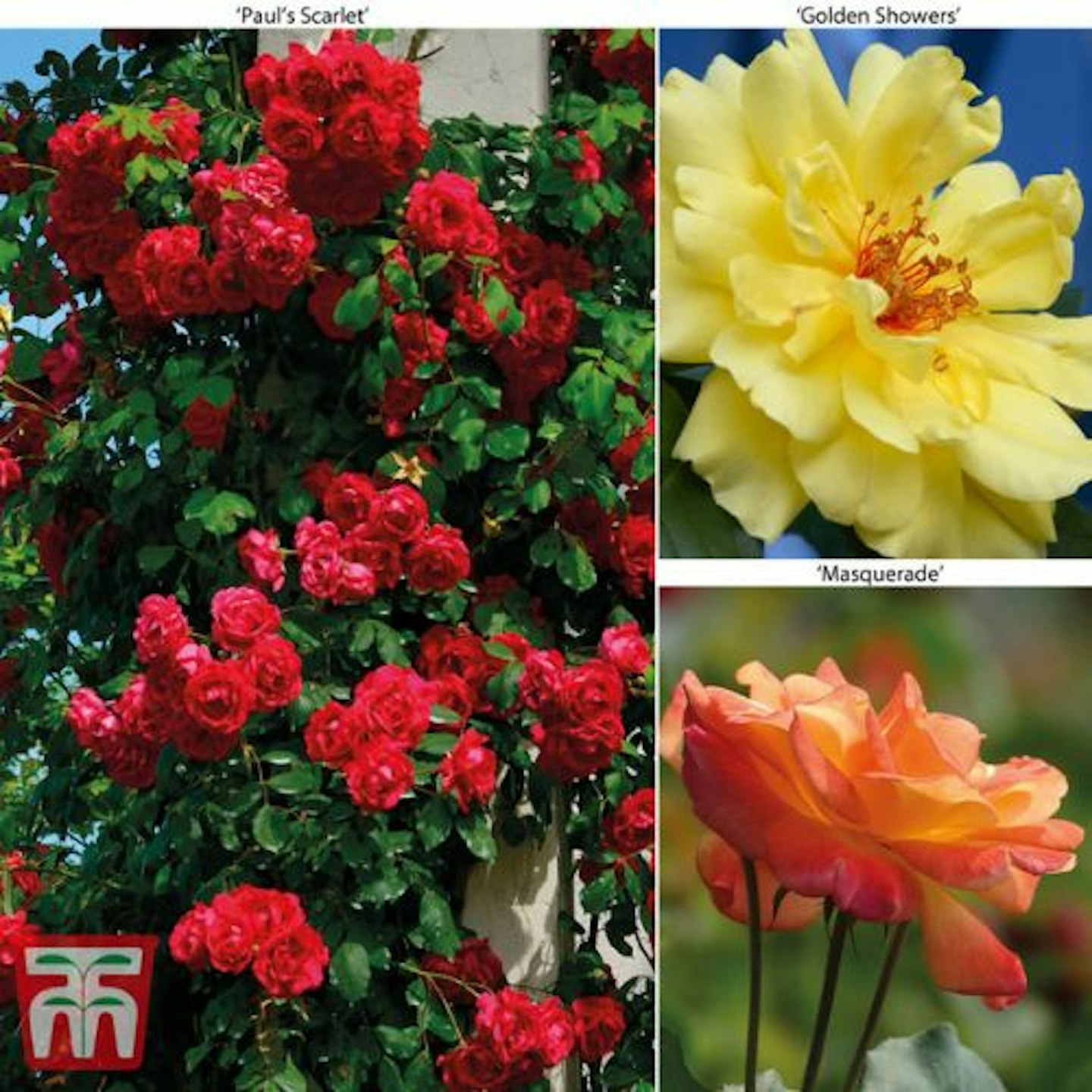
www.thompson-morgan.com
This fantastic Rose Climbing Collection will cover walls and pergolas with an abundance of romantic summer blooms. A cottagecore dream, this collection includes Paul's Scarlet - a red, cup-shaped bloom in large clusters, Golden Showers - a repeat variety which can put up with shady spots and smaller spaces - and Masquerade - which comes in a delicate yellow, which transforms into pinks. Some of these flowers are even edible. As a quick note, Thompson Morgan recommends growing this bunch next to your herb garden to deter aphids and blackflies. Interesting!
Customer Review: "Excellent - bare root plants which have just started to shoot."
Pros
- Gorgeous collection of climbing roses
- Large clusters that won't fade in the sun
- Perfect for covering walls and pergolas
Cons
- Some customers were confused about pack sizes
| Height | Up to 3 m |
| Spread | Up to 2 m |
| Rate | Average |
| Soil | Rich, fertile, well-drained soil |
| Hardiness | Hardy Shrub |
| Position | Sun / semi-shade |
| Flowering Period | June to September |
| Type | Deciduous |
Self-Clinging Climbers
Climbers that self-cling onto surfaces are extremely useful.
Apart from the vast range of ivies available, for autumn effect try Parthenocissus tricuspidaria which turns scarlet or dark-leaved P. henryana which looks good all year.
Best climber for beginners

www.thompson-morgan.com
Parthenocissus tricuspidata "Boston Ivy", is a robust climber, self-clings effortlessly and thrives with minimal effort. Its leaves exhibit green hues in spring and summer, transforming into an array of reds and purples during autumn before shedding. Its low-care requirements make it an excellent choice for an easy-to-manage garden addition.
Customer Review: "All plants arrived safely and are doing well."
Pros
- Self-clinging and very easy to grow
- Requires little or no maintenance
- An impressive display during autumn
Cons
- Grows very tall and wide - may not suit all spaces
| Height | Up to 12 m |
| Spread | Up to 8 m |
| Rate | Fast-growing |
| Soil | Average, dry to medium, well-drained soils |
| Hardiness | Hardy shrub |
| Position | Sun / semi-shade |
| Flowering Period | September to November |
| Type | Deciduous |
Best climber for both sun and shade
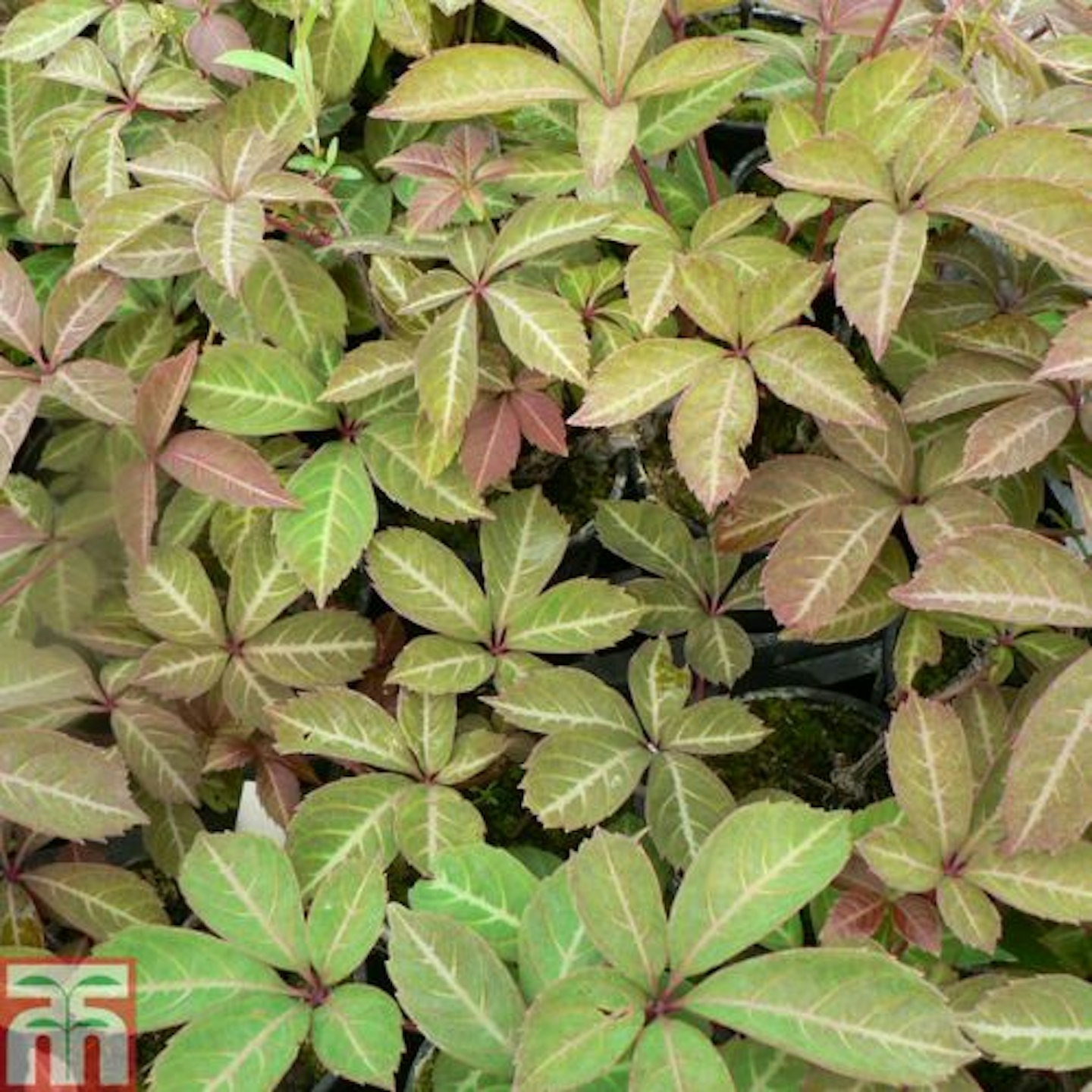
www.thompson-morgan.com
Parthenocissus henryana "Chinese Virginia Creeper" makes a splendid deciduous climber that envelops walls with lush foliage. Come autumn, a dazzling transformation unfolds, with vibrant red and orange hues and clusters of blue-black berries. Though less vigorous than some, this plant demands ample space. Its adaptability to both sun and shade makes it ideal for challenging north-facing walls with limited sunlight. A majestic addition to any garden.
Pros
- A majestic deciduous climber
- Radiant shades of red and orange
- Less vigorous than other species
Cons
- No customer reviews
| Height | Up to 12 m |
| Spread | Up to 4 m |
| Rate | Fast |
| Soil | Fertile, well-drained soil |
| Hardiness | Fully hardy |
| Position | Full sun / semi-shade |
| Flowering Period | June to August |
| Type | Deciduous |
The blue-speckled berries of Ampelopsis brevipedunculata are an autumnal treat, while compact variety ‘Elegans’ has pink splashed foliage and is ideal for smaller spaces.
Best climbing plant for a sun-dappled garden wall
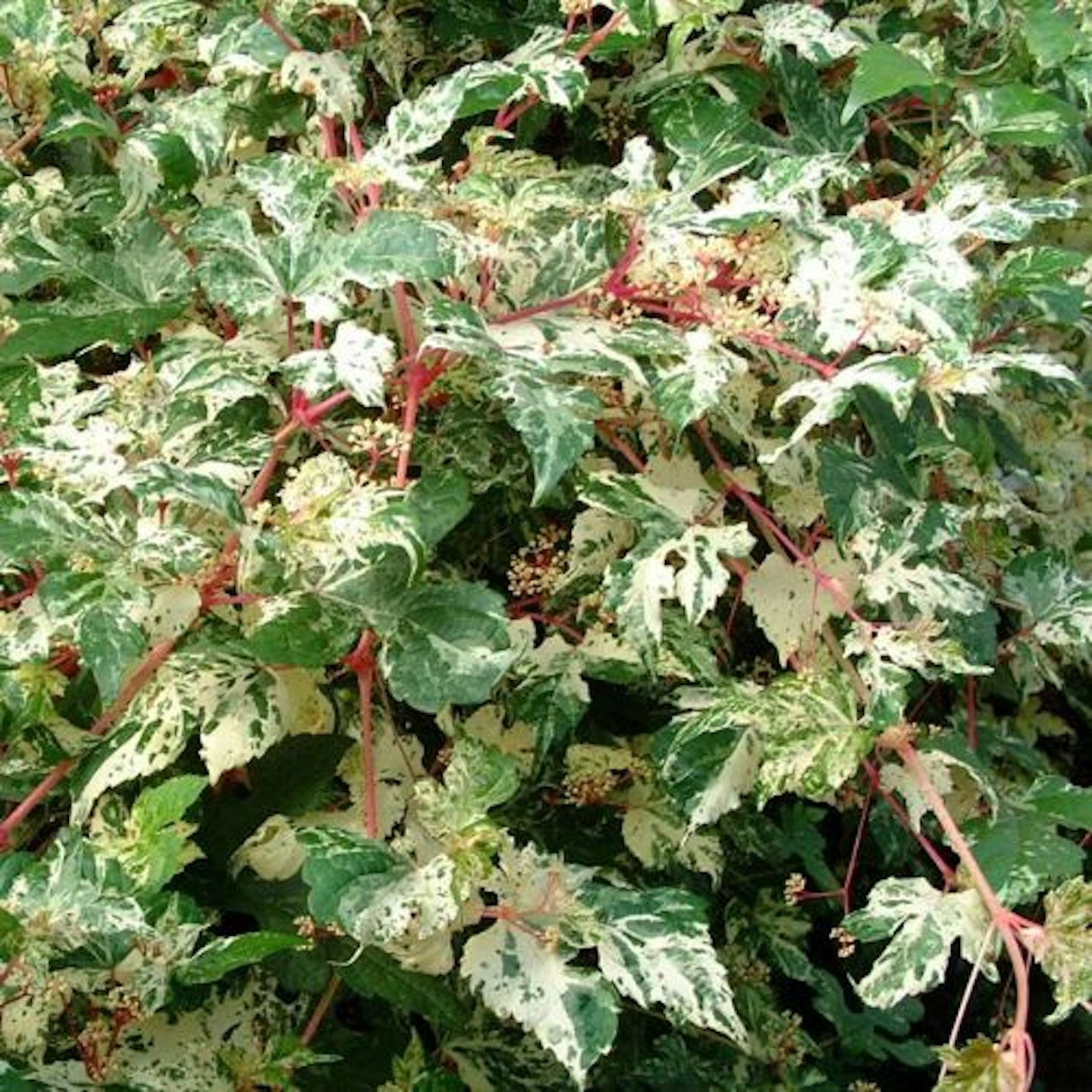
www.crocus.co.uk
Hailing from the grapevine family, this deciduous Ampelopsis brevipedunculata 'Elegans' climber boasts cream and pink leaves. In autumn, it often transitions to fiery red or golden hues before shedding. Ideal for a sun-dappled, sheltered wall, this plant occasionally graces with decorative berries, making it a charming addition to your garden.
Customer Review: "Lovely plant! Very attractive."
Pros
- Handsome addition to a warm, sheltered wall
- May reward you with ornamental berries
- Lasts through autumn with red and yellow tones
Cons
- Requires some shade from the hottest part of the day
| Height | 5 m |
| Spread | 3 m |
| Rate | Average |
| Soil | Moderately fertile, moist, well-drained soil |
| Hardiness | Borderline hardy (will need protection in winter in colder areas) |
| Position | Light shade |
| Flowering Period | June to July |
| Type | Deciduous |
Best climbing plant
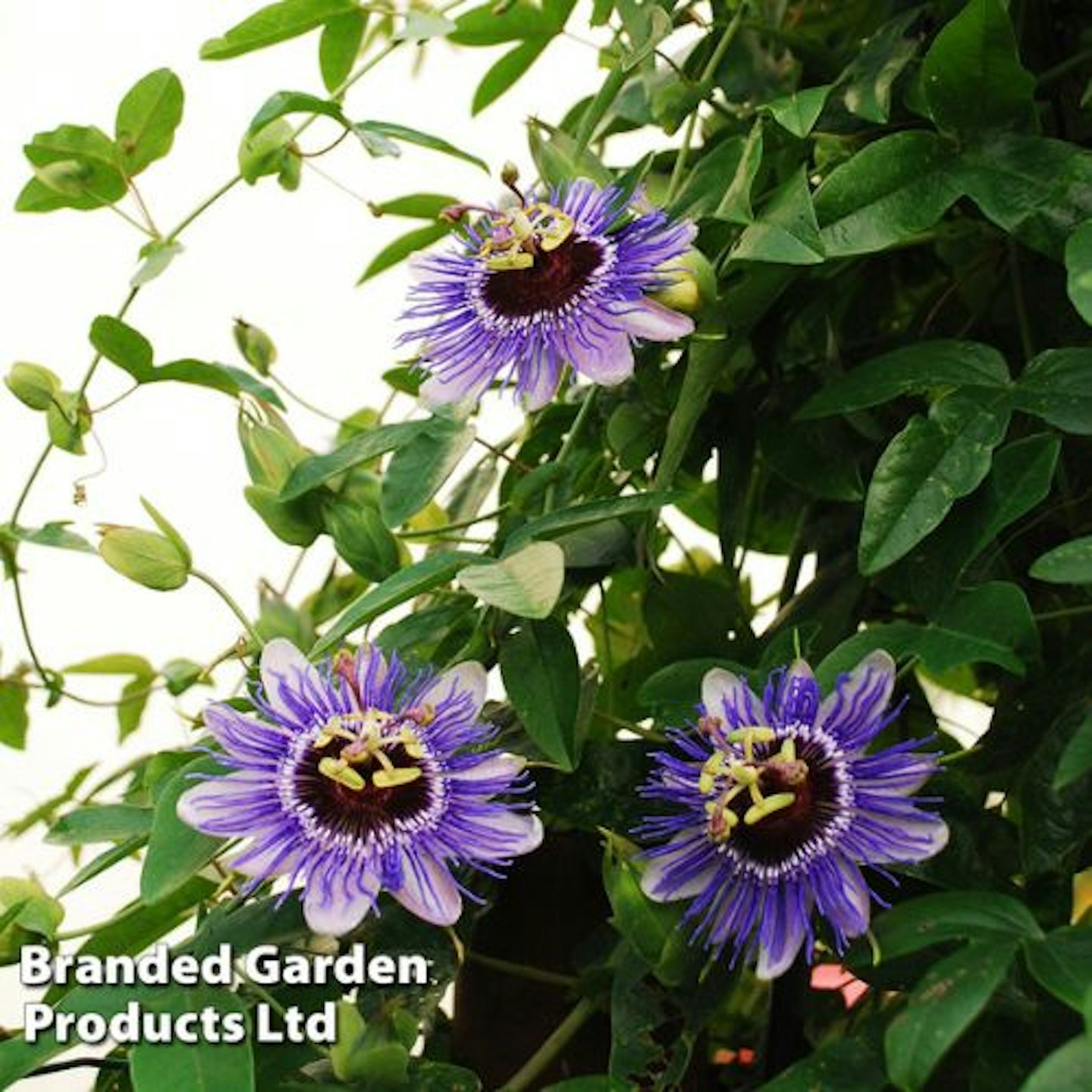
www.thompson-morgan.com
Passiflora 'Purple Haze', with their exotic allure, thrives easily when provided with a warm, sheltered wall. A rapid grower, this Passion Flower adorns south or west-facing walls with glossy, deeply-lobed, semi-evergreen foliage and showcases pure white blooms featuring striking purple stigmas. Perfect for sheltered spots like sunny patios or courtyards, it blooms generously from mid-summer to autumn. It adds a touch of exotic charm to your garden, too.
Pros
- Large flowers with vibrant purple filaments
- Exotic looks but extremely vigorous
- Glossy semi-evergreen leaves
Cons
- Plant height and spread are seasonal
- Requires a little extra support to grow
| Height | 4 m |
| Spread | 4 m |
| Rate | Average/Rapid |
| Soil | Moist, well-drained soil |
| Hardiness | Hardy perennial |
| Position | Sun or Shade |
| Flowering Period | July to September |
| Type | Semi-Evergreen |
Planting Guide
Thanks to the Royal Horticultural Society, we have the ultimate planting guide for climbers to help us make the most of our gardens. Which is best for me - and when is best to plant them? All of these questions are answered below...
Climbing plants come in all shapes, sizes and styles, says the RHS - so, you're bound to find one that fits your lifestyle, location and garden best. Put simply, there are various factors to help you choose the best one:
Which Plant Is For Me?
Eventual Size - will come into play. For this, "bear in mind the amount of room you have available", recommends the RHS. Even though they grow vertically in nature, some climbers can be a little overwhelming and grow vigorously. For this, we've made sure to include a plant's eventual height and spread in our listings. Some are ideal for small spaces.
Colour and Fragrance - likely is influenced by aesthetics and overall preferences. With their lush foliage and colourful flowers, they create enchanting displays that change with the seasons. Plus, several climbing plants have medicinal or aromatic properties. Jasmine, for instance, is used in perfumes and aromatherapy. What scents do you like the most?
Style - differs from climber to climber. Climbing plants can complement various garden aesthetics and styles, enhancing the overall appeal of your outdoor space. For example, climbing roses are quintessential for the romantic and informal charm of a cottage garden, whereas Japanese Wisteria works well for a Japanese-inspired Zen garden.
More to Consider
Seasons of Interest - adds an exciting element. These versatile plants can transform the aesthetics of your surroundings throughout the year, creating a dynamic and ever-changing landscape. Some climbing plants exhibit seasonal interest year-round, whereas others will have their moment to shine during specific seasons in the year.
Evergreen or Deciduous - are the main two groups of climbers. Evergreen climbers maintain their foliage year-round, providing greenery and structure even in the winter months - even for privacy. On the other hand, deciduous climbers shed their leaves in the fall, revealing their structure and providing a dramatic display of changing colours in autumn.
Short-Lived or Long-Term - climber plants differ in their lifespan and growth characteristics. Short-lived climbers offer rapid growth and abundant blooms but may need frequent replanting. Long-term climbers grow more slowly but provide enduring beauty and structure, making them suitable for permanent landscaping features.
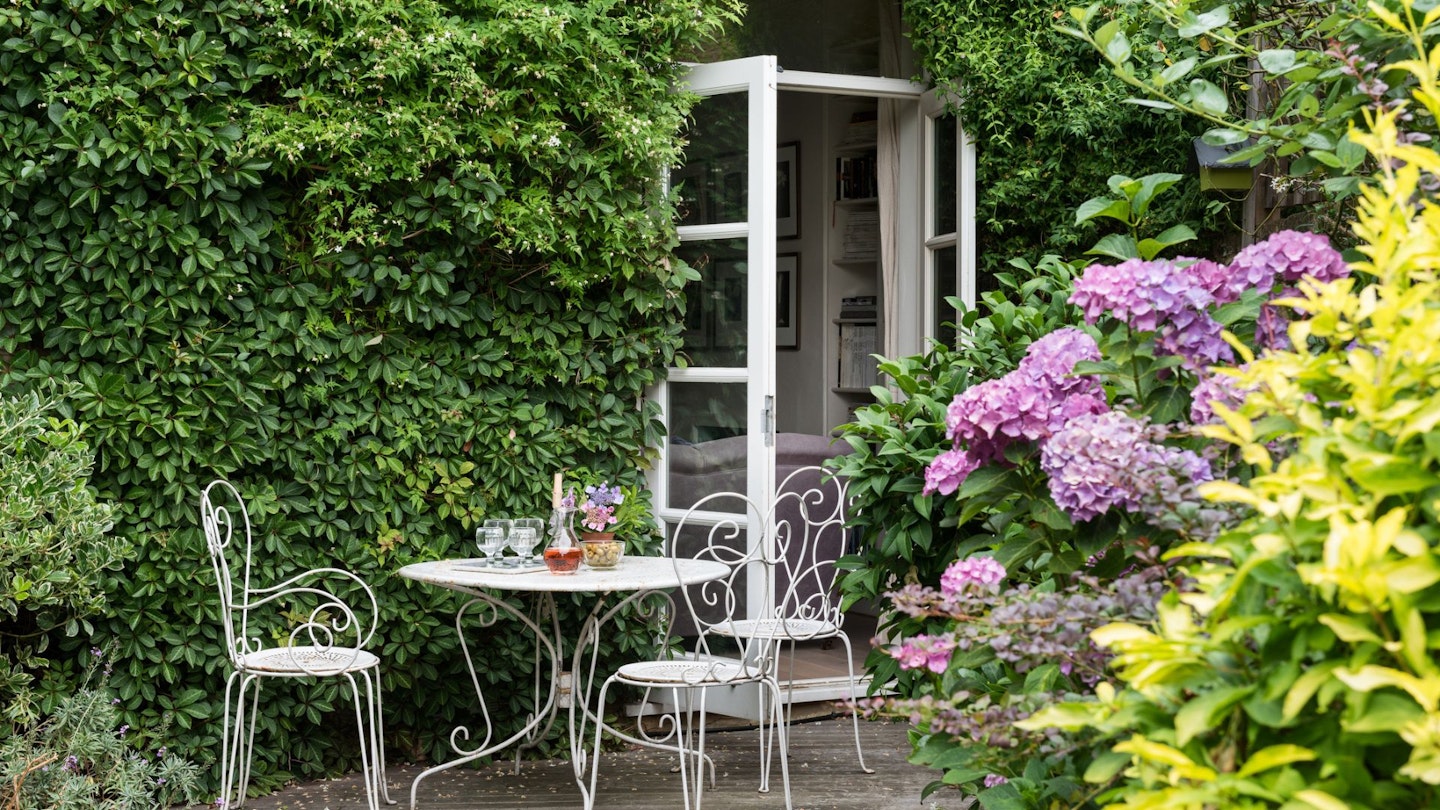
Planting...
When do I plant a climber?
The RHS says that climbers "are best planted in spring or autumn". If you're planning on re-vamping your springtime garden, choose "less hardy types... so they have plenty of time to settle in before winter arrives."
Where do I plant a climber?
Climbers should be planted 45cm (18 inches) from the base of a wall, says the RHS, as this allows "rain to reach the root zone." Plus, planting away from the wall keeps the roots happy, as the soil found around walls is usually "impoverished" and they won't be restricted by foundations or rubble, either. They're free to grow however they please - with your guidance. For a successful climber, the plant should be angled into the wall or fence.
Similarly, if you opt for a tree for your climber to creep up, the roots should be 50cm away from the tree base.
If you're considering which spot to choose, remember there are climbers for all situations and spaces - from sun to shade. Our advice is to assess your space and read the guidance before you buy. Otherwise, you will be disappointed. If you have a patio, you won't be missing out, as many types can be grown in large containers with lots of upkeep.
What soil is best for a climber?
Free-draining soil is preferred by climbers. The RHS recommend adding "plenty of garden compost, or leaf mould to the entire planting area to improve the soil structure." This will help with moisture, fertility and microorganisms. It's a straightforward process - and they settle in quickly, says the RHS in their climber planting guide.
Ongoing Care
Water - regularly for the first growing season, says the RHS. If you've potted your climbers, water will be required as the surface becomes dry. Don't forget that plants climbing against walls will need particular attention.
Feeding - can be used to boost flowering - with high potassium fertiliser.
Weeding - the ground around the creeper will prevent any competition for water.
Mulch - can prevent the soil during out and improve the structure, too. On this, the RHS says: "The mulch should cover the whole root zone of the plant, but not touch the stem, as this could cause rot."
Overwintering - will give some of your plants some extra protection during the colder months. The RHS says: "You can also provide additional insulation by laying a thick mulch over the root zone and wrapping them up before winter sets in."
Pruning and Training
Your new climbers will require "initial training and pruning at planting time, to encourage them to spread out to fill their allotted space and develop an attractive shape," says the RHS. This keeps your plants neat and tidy, as well as attractive and flowering well. However, some plants will have more specific requirements - so, research individually.
Climbing Plants FAQs
Which climbers can I plant in tricky places?
North-Facing Fence – Shady fences are no problem for climbing Hydrangea petiolaris. Other good choices include ivy and pyracantha. For larger spaces try Parthenocissus cultivars.
Garden Eyesore – A vigorous climber such as Clematis montana is ideal for hiding an ugly garage or disguising a rabbit hutch. Its pretty pink spring flowers are a picturesque bonus.
Summer Hotspot – In a sun-drenched, south-facing garden it’s nice to have some relief from the summer heat. Grow a climbing rose over a gazebo to create a fragrant focal point or dining area.
South-Facing Fence - Exploit a frost-free hot spot by planting a tender climber such as Passiflora caerulea (passionflower). Or, train a vine against a sun-warmed wall to help the fruits ripen.
Which climbers grow in the shade?
Do you have a shaded wall or fence facing north or east? You can cover up unsightly walls with a climber. Gardeners World says: "North and east-facing boundaries can be transformed by a surprising amount of attractive climbers. Some will do better on an east-facing boundary which should get sun for part of the day. Others will cope in full shade."
These can include Clematis, Roses, Ivy, Honeysuckle and Star Jasmine.
How to build a trellis for your climbing plants
To cut some costs, you could make your own trellis, which is the perfect environment for climbers.
This video from YouTube seems to have a cheap and easy trellis for us DIY novices out there to make...
What to read next:
Begonia bedding plants: Our buying and care guide to these vibrant blooms
Discover everything you need to know to make your outside space look fantastic, quickly and easily, with hundreds of simple ideas, designer tricks, affordable products and expert advice with a Modern Gardens Membership. Find out more about the benefits of being a Member now.
Piper Huxley is a Homes, Garden and Wellness Product Writer for Modern Gardens Magazine, an all-rounder. When she’s not writing about houseplants, she’s tending to her own growing collection…
